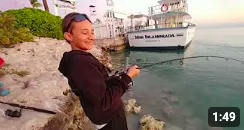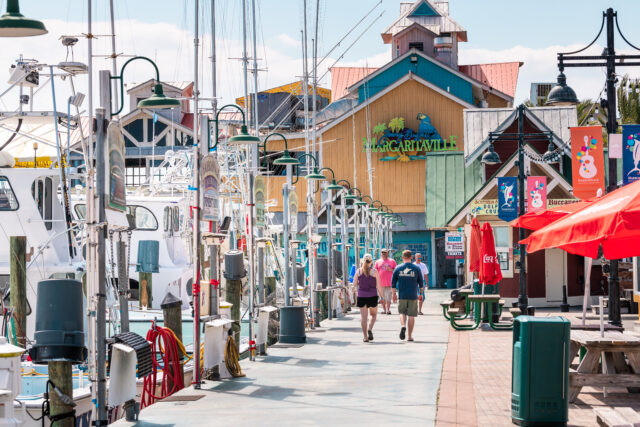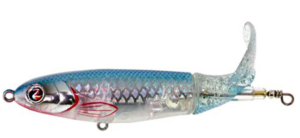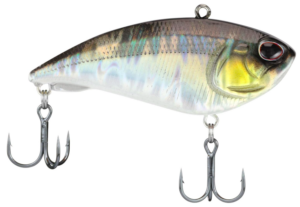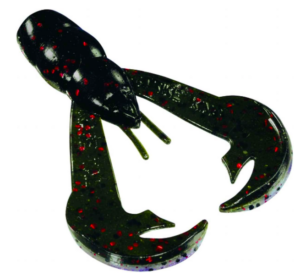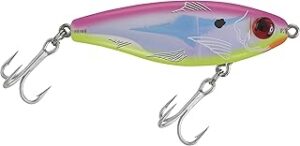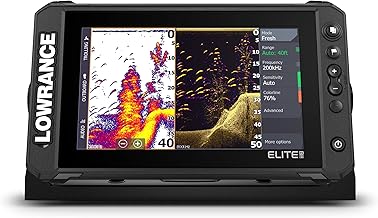
Gag Grouper are most popular species of grouper that is caught by anglers in the U.S. Goliath grouper have been getting all of the attention in the press and from the fishing shows, but the gag grouper is what most anglers target when they head offshore to fish the reefs and wrecks. Gag grouper are also found inshore, but these fish are much smaller on average than what you can catch offshore. Average catches inshore usually range from 5 to 10 pounds, which is still a really nice fish and they taste great. Offshore, you can find good numbers of gag grouper in the 10 to 20 pound range and they can grow to over 50 pounds.
Inshore, anglers target gag grouper along the mangroves, around docks, near bridges, around oyster beds, in deep water holes and along ledges. Moving water is key, so make sure to fish during the tidal changes to experience some of the best fishing.
Offshore, you will find gag grouper on the many reefs and wrecks anywhere from 20 feet deep to over 500 feet deep. Heavy tackle is required to keep these fish from getting you snagged up in all of the bottom structure that you will be fishing.
Some of the live baits that work well for gag grouper are crabs, pinfish, sand perch, shrimp and squid. Artificials can also be productive. Anglers use deep-diving crankbaits, jigs and soft plastics.

Goliath grouper, also called jewfish, are becoming some of the most exciting fish to catch in the United States. Because of all the tv shows that have been done on goliath grouper, many anglers are planning fishing trips to central and southern Florida just to get a chance to catch one of these huge fish.
Inshore, anglers can find tons of these big fish near docks, bridges, in deep holes and on ledges. Smaller goliath grouper can be found in the estuaries around oyster bars, docks and mangrove-lined shorelines. Offshore, goliath grouper can be found on the reefs and wrecks in very deep water. Goliath grouper eat a variety of different baits, but most anglers will target them with jack crevalle, mullet, menhaden and sting rays.
Black Grouper are found offshore near reefs and wrecks in deep water, although, some smaller fish can be found in shallower water. Bottom fishing with a variety of live baits and cut baits work well for black grouper.
Misty Grouper are found offshore in very deep water. They feed on small fish, crustaceans and squid.
Nassau Grouper are found offshore on rocky reefs, although, smaller, juvenile fish are found on the nearshore reefs. Like other grouper, you can catch them by bottom fishing with a variety of bait fish and squid.
Scamp Grouper are found around nearshore and offshore reefs and wrecks. Scamp are smaller than gag grouper. The average-sized fish caught by anglers is around 5 pounds, but fish above 10 pounds are not uncommon. Scamp feed on small fish, squid, and crustaceans.
Snowy Grouper are found in very deep water, often from 300 to 800 feet deep on offshore reefs. They will eat a wide variety of baits, so if you can find them they are very catchable.
Warsaw Grouper are found in very deep offshore waters and they grow very big. The average-sized fish caught by most anglers is in the 20 pound range, but fish over 100 pounds are common and they can grow to over 500 pounds.
Yellowedge Grouper are usually found in very deep water on the offshore reefs. It is not uncommon to find them anywhere from 200 to 900 feet deep. Anglers usually target these fish with heavy duty rods, electric reels and heavy line. They feed on crabs, squid and small fish.
Yellowmouth Grouper are found offshore over reefs and rocks. They feed on small fish and crustaceans.
The Yellowfin Grouper is found in deep water on offshore reefs. Fish in the 20 pound range are common. Yellowfin grouper feed on small bait fish and squid.



